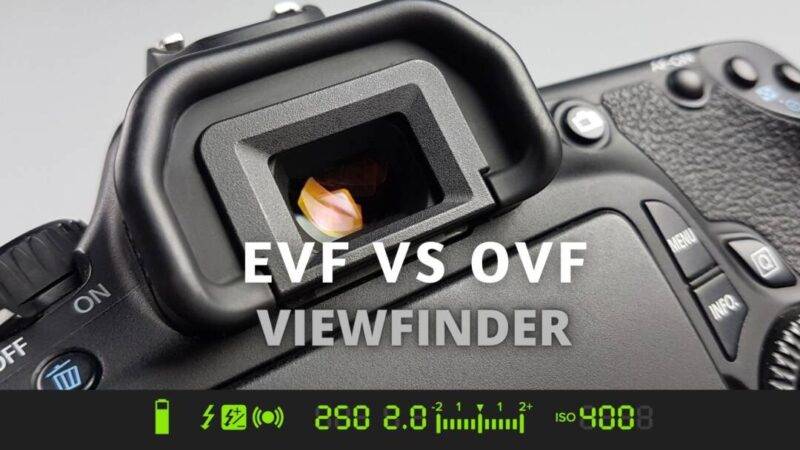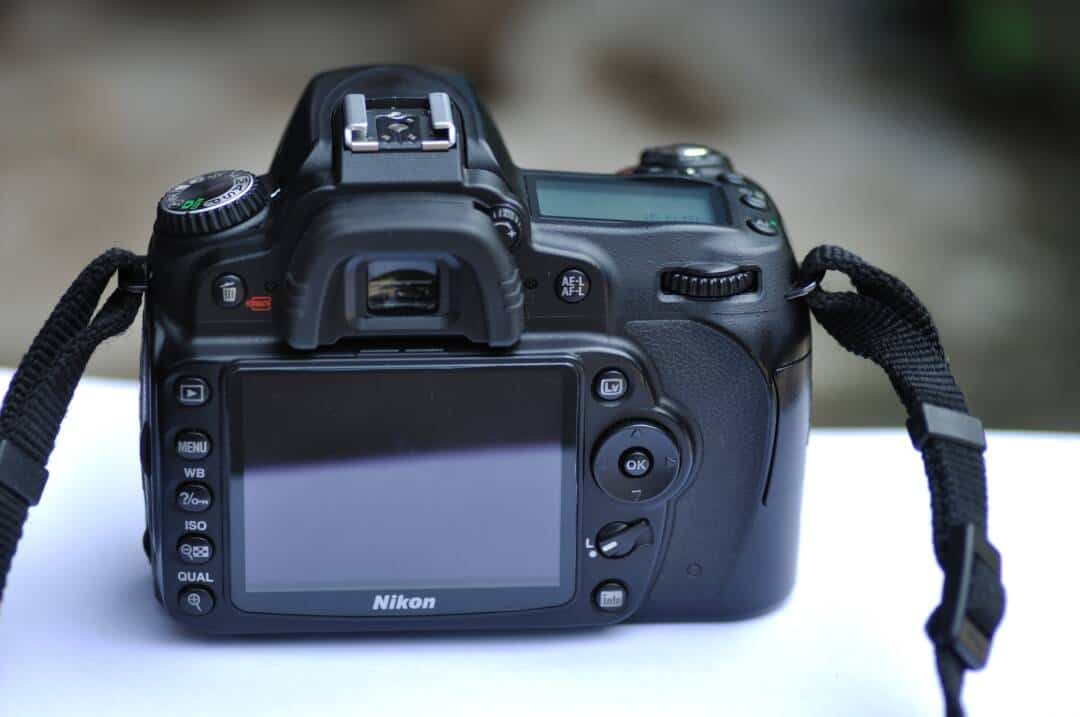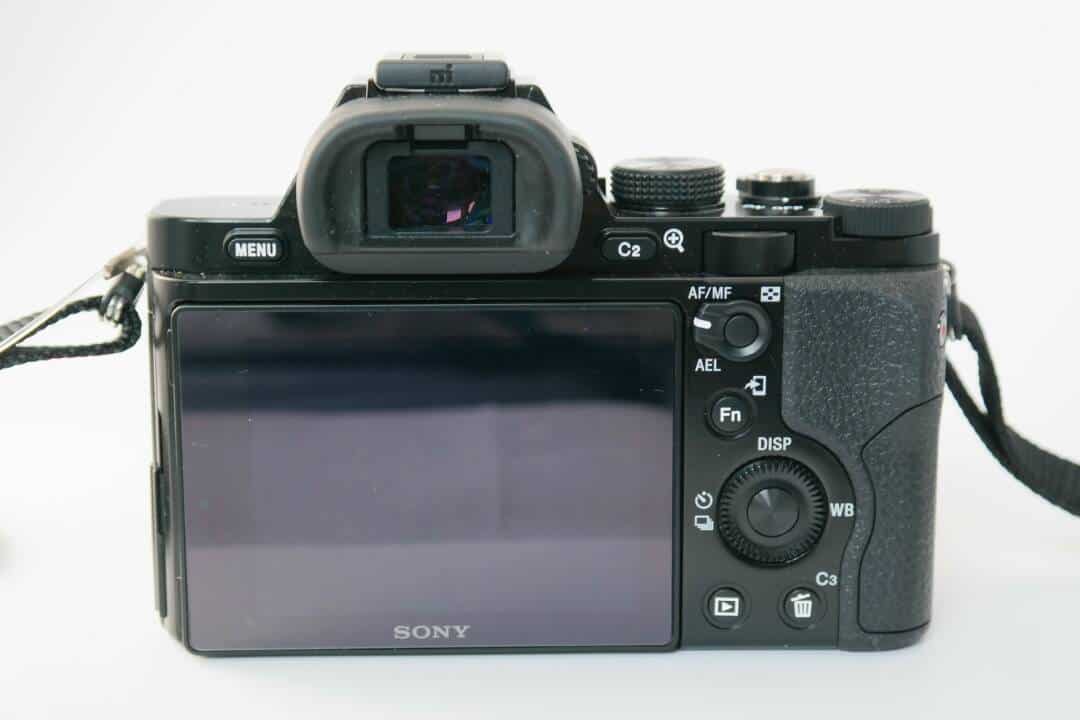Last Updated on October 4, 2021 by PixelPluck
There are two types of the viewfinder in any camera. They are Electronic Viewfinder and Optical Viewfinder. Both of these viewfinders have the same basic function but acts on different principles. In this blog post, you will find simple and easy to understand EVF vs OVF – Viewfinder Comparison.
What is a viewfinder?
A viewfinder is the physical component of the camera through which you can see and compose a photograph before you press the shutter. The viewfinder is the eyepiece on the camera which shows the area of coverage of the photograph.

What are the different types of viewfinders?
Modern cameras come with two types of viewfinder. They are Electronic viewfinder (EVF) and Optical Viewfinder (OVF).
Key benefits of EVF over OVF
There are several benefits of EVF over OVF which are listed below.
Information Overlay
With OVF, you never get to see more than some basic grids. There is some static information presented in the viewfinder, but it is always fixed and cannot be easily changed. With EVF, you can get any information you want to be displayed right inside the viewfinder – from live exposure data to histograms. Different warnings could be added, such as a warning for a potentially blurry shot.
Live Preview
The same live preview on the LCD can be shown inside the EVF.
Image Review
Another key feature that you will never get in an OVF is image review. How cool would it be to see the image that you have just captured right inside the viewfinder? With OVF, you are forced to look at the LCD screen, which is a big pain in daylight conditions. People buy a Hoodman Loupe to be able to see their LCD screen in daylight on their DSLR! With EVF, you never have to worry about this, since you could use the viewfinder for reviewing images instead.
No More Viewfinder Coverage
With OVF, what you see in the viewfinder is about 1-5 % smaller than what the camera will capture. EVF will always be 100% viewfinder coverage since what you see in the EVF is what the sensor will capture.
Brighter Display
When light conditions are poor, you cannot tell if the subject is in focus until you take the picture. With EVF, brightness levels can be “normalized”, so that you can see everything as if it was daylight. Some noise might be present, but it is still way better.
Digital Zoom
Very useful and popular feature! If you have used a Live View mode on your DSLR before, you know how helpful zooming in can be. With most modern DSLRs, you can zoom in to 100% and nail focus. Well, with mirrorless cameras, this feature can be built right into the viewfinder! So imagine manually focusing with a lens, then zooming in to 100% right inside the viewfinder before you take the picture. Several mirrorless cameras are already capable of doing this. An OVF would never be able to zoom like that.
Face / Eye Tracking
This is the coolest part of EVF technology. Because the EVF shows what happens on the sensor, additional technologies for data analysis can be utilized to do very cool things, like face and even eye-tracking! You can take it a step further and could have the camera automatically focus on the nearest eye of the person that you are photographing. How cool is that? Sony is already doing this on their new Sony A7/A7R cameras!
Potentially unlimited focus points
DSLR cameras have a limited number of focus points that are distributed mostly around the center of the frame. While it works out in most situations, what do you do if you need to move the focus point to an extreme border of the frame? The only option is to focus and recompose, but that might not be always desirable, since you are also shifting the plane of focus. In addition, anything away from the center focus point is typically inaccurate and could result in “focus hunting”, where the camera struggles with AF acquisition and goes back and forth continuously. With mirrorless cameras and phase-detection sensors placed directly on the imaging sensor, this limitation can be lifted. Contrast detection is already possible anywhere in the imaging sensor, while on-sensor phase-detection will eventually get to the point where focus points will be distributed all over the sensor.
Subject Tracking and other Future Data Analysis
Face tracking opens up a whole innovation opportunity. Imagine having a complex tracking system that intelligently combines sensor data with autofocus and uses it to track a given object, or subject in the frame. Even the top of the line DSLR cameras today have challenges with full subject tracking. If you have tried photographing birds in flight with a DSLR, tracking can get challenging, especially when the bird moves out of the focus point area, or when the light conditions are less than ideal. If data is analyzed on a pixel level and there is no real autofocus area to concentrate on, subject tracking could potentially get super-advanced with mirrorless cameras.
Eye damage
When looking through a viewfinder, one has to be extremely careful about photographing the sun, especially with long focal length lenses. With EVF, the image is projected through the sensor and there is no harm to your eyes.


Advantages of OVF vs EVF
Better Clarity and Resolution
Optical viewfinders offer an unhindered view of the subject inside the frame. This means what you see is the exact image of reality.
True Brightness and Dynamic Range
Optical viewfinders have a better dynamic range and brightness compared to electronic viewfinders. The scenes are not artificially lit and are presented as it is.
OVF works with Camera off
One of the top advantages of OVF over EVF is the ability to be useful even when the camera is off. Electronic Viewfinder needs electronic power to operate.
Simple Construction
OVF is simpler in construction compared to EVF.
Usually, cameras with smaller bodies like the mirrorless, come with an electronic viewfinder which helps in saving construction space. The top of the line expensive DSLR cameras come with an optical viewfinder.
Frequently Asked Question on EVF vs OVF
Both are equally good with their own sets of advantages and disadvantages. OVF is preferred by professional photographers over EVF.
No. an Optical viewfinder does not need any electronic assistance to work. It works even when the camera is switched off.
EVF and OVF are types of viewfinders used in different cameras.
You can’t go wrong with either EVF or OVF. Most mirrorless prefers EVF while bulky DSLRs prefer OVF. EVF and OVF should not be the deciding point when buying a camera.